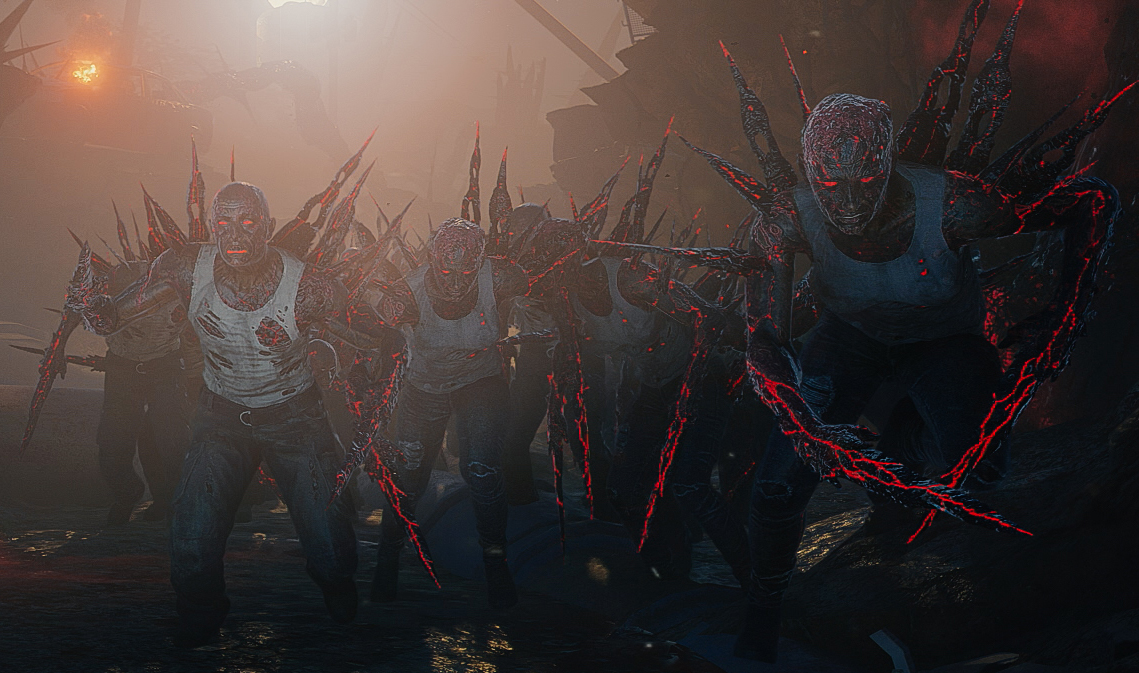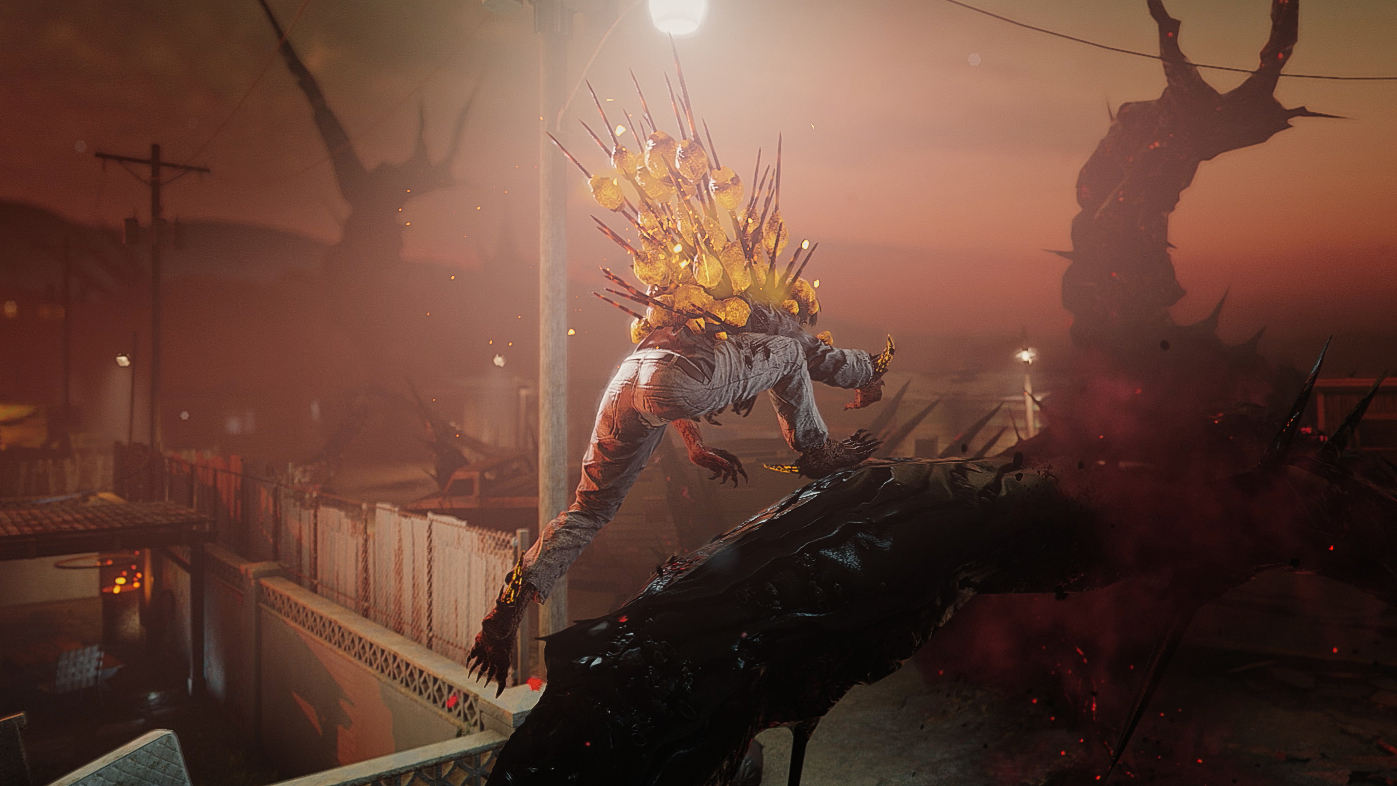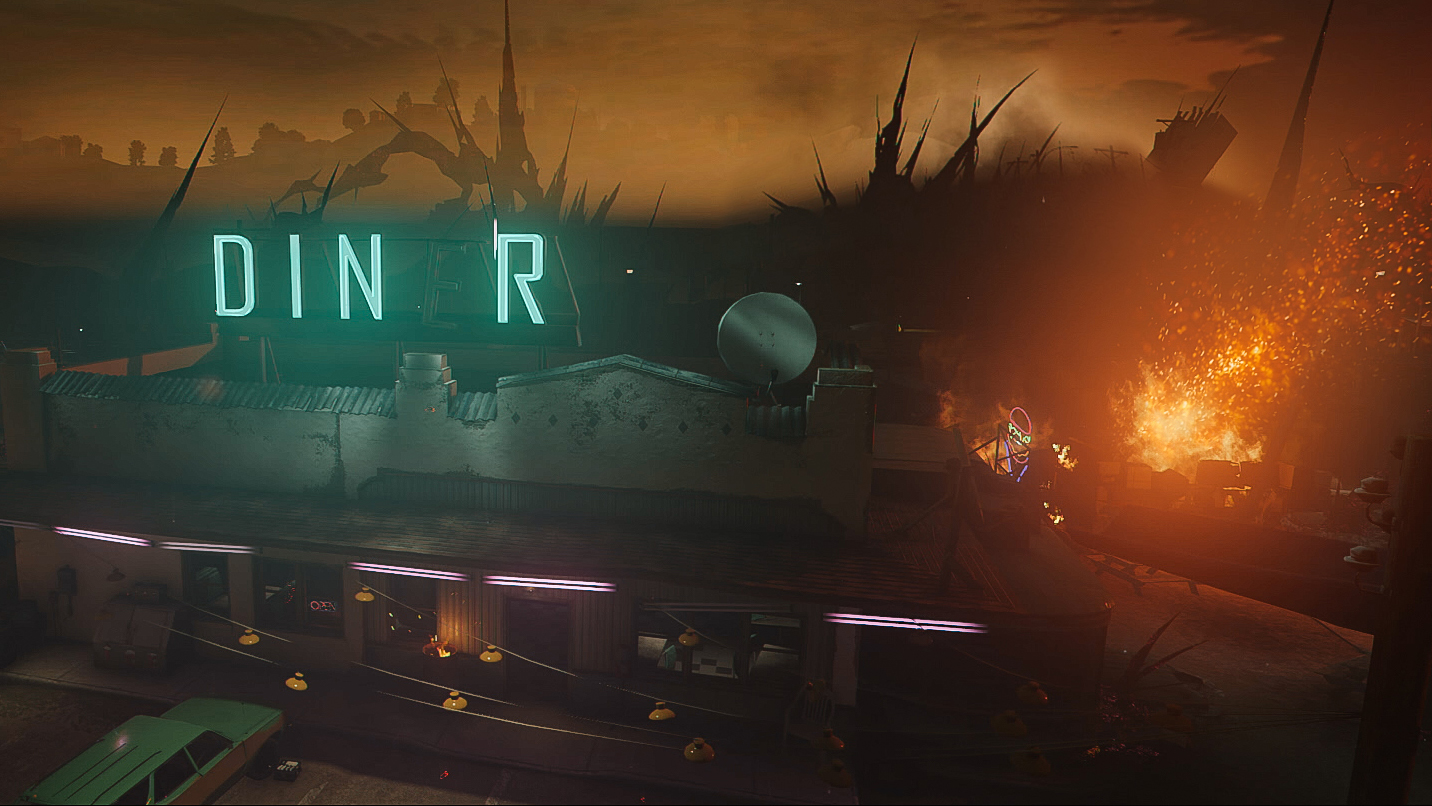Rainbow Six Siege's zombie mode is weird, fun, and surprisingly big
Hands-on with Outbreak, the new three-player co-op mode for Ubisoft's tactical FPS coming March 6.
Two years and two months into Rainbow Six Siege's lifespan, who would've wagered that the serious, tactical FPS born from a 912-page Tom Clancy book would be going all-in on alien zombies?
Outbreak, the new three-player co-op mode coming March 6, is weird, refreshing, and unexpected, until you remember it's practically a right of passage for popular multiplayer FPSes to tack on some kind of wave-based co-op distraction. Call of Duty: WWII Zombies. PUBG zombies. Overwatch's Uprising. Heck, Counter-Strike has a free-to-play Korean-developed zombie spinoff.
Accepting these thematic gymnastics as inevitable, the real question is how well zombies, and the style of wandering co-op we've been playing since Valve did it in 2008, fit into Rainbow Six Siege. Pretty well, actually. You can check out about 15 minutes of in-game footage above.

Left Six Dead
After playing Outbreak a bunch this weekend, I see it as a palate cleanser for Siege's otherwise deliberate play. You're gunning through a couple hundred monsters over 20 or so minutes, often emptying mags as fast as you can attach them to your gun. Outbreak completely foregoes the stealth, information play, and deception that's plentiful in Siege's multiplayer. Offensive destructibility is deemphasized, too—you're not breaching and clearing as much as you're just mowing down everything that moves.
By pace and structure, Left 4 Dead is the clearest equivalent.
I'm happy that Outbreak is more than a simple, wave-based defense mode. The three levels (not merely maps) flow like the first couple hours of a singleplayer FPS campaign, with radio dialogue from Thermite, for example, feeding you instructions as you meander to the next objective. The setting is unlike anything in Siege: a New Mexico resort, hospital, and junkyard devastated by a menagerie of mutant humans, converted by whatever alien zombie parasite thing has fallen to Earth. The intro cutscenes are straight out of XCOM, a nice touch, with your operators dropping in cinematically with your personalized outfits and gun skins visible.
By pace and structure, Left 4 Dead is the clearest equivalent. Most of your time is wandering between ruined houses and interiors, gunning down the shambling residents scattered in driveways and bedrooms. Occasionally, the format shifts. At three or four different points, my co-op trio had to place explosive charges on something (alien biological structures, or a giant door inside the house of 'patient zero'), then defend it from being destroyed as dozens of monsters swarmed our position. On the hospital level, one of our team carried an injured doctor (as you would a hostage in Siege multiplayer, limited to a sidearm) from floor to floor as we helped her gather the materials to construct a cure.

Health and ammo are abundant enough—this isn't a survival game.
The enemies, as in Left 4 Dead, are asymmetrical, but the experience of tangling with them isn't identical. The vast majority of these monsters—probably 80 percent—are low-level "grunts." They appear human at first, and are harmless if you can pull off a headshot without alerting them. If they hear gunfire, see you, or if you point your flashlight at them for too long, they'll rapidly transform into an armored version of themselves and spawn crystalline arm scythes to poke you with. Otherwise, "rooters" can lock you in place, "smashers" are lumbering tanks who only accept damage from behind, and the "Apex" is a floating mutant wizard who spawns low-level enemies, can blind you from afar, and is an insane bullet sponge.
Keep up to date with the most important stories and the best deals, as picked by the PC Gamer team.
The best-worst enemies are the "breachers": fungal-looking, self-detonating monsters who crawl around on four legs. They come at you like a wall-crawling Boomer, and in the same way, blasting them at close range is a bad idea. I liked the way breachers altered my instincts to shoot everything in sight—I had to exercise restraint when they were around, but if I timed my shot right I could use them as a kind of walking explosive barrel to take out a few grunts as collateral.
So yeah, Outbreak is quite Left 4 Dead on paper, but the rhythm of it doesn't mirror Valve's shooter completely. When you encounter one of these special infected equivalents, there isn't the same drop-everything-until-it's-dead mentality on your team: it's simply a high-priority target. Health and ammo are abundant enough—this isn't a survival game.

Post-mortem
It's arguably the richest single package added to Siege since it released in 2015.
Outbeak feels like an indulgence, for the developers—who I suspect wanted to explore some new territory after several years—and for Siege's fans, who get the most lore they've ever had in the game's history and a chance to see a few of their favorite operators in a very different situation. It isn't anything you haven't played before, but mechanically it works well enough within Siege's weapon and gadget set thanks to the fully-realized setting and over-the-top monster design.
The natural question, and it's one I've seen a lot, is if Ubisoft is putting in all this effort, why is Outbreak only running for a month? When I asked Ubisoft here in Montréal over the weekend, the answer was that supporting Outbreak over a long period of time would represent a bigger commitment—technically and otherwise—than it's ready to give right now.
Other than that, I think the book's already been written on seasonal PvE content like this in multiplayer games—devs like having these temporary modes as a lever they can pull to surge players back into the game. If all goes well, I'd be surprised if we didn't see Outbreak return briefly again in 2018. It's arguably the richest single package added to Siege since it released in 2015.

Evan's a hardcore FPS enthusiast who joined PC Gamer in 2008. After an era spent publishing reviews, news, and cover features, he now oversees editorial operations for PC Gamer worldwide, including setting policy, training, and editing stories written by the wider team. His most-played FPSes are CS:GO, Team Fortress 2, Team Fortress Classic, Rainbow Six Siege, and Arma 2. His first multiplayer FPS was Quake 2, played on serial LAN in his uncle's basement, the ideal conditions for instilling a lifelong fondness for fragging. Evan also leads production of the PC Gaming Show, the annual E3 showcase event dedicated to PC gaming.

